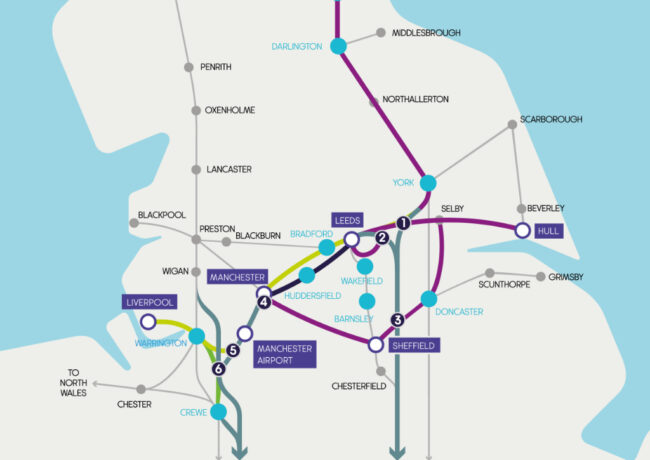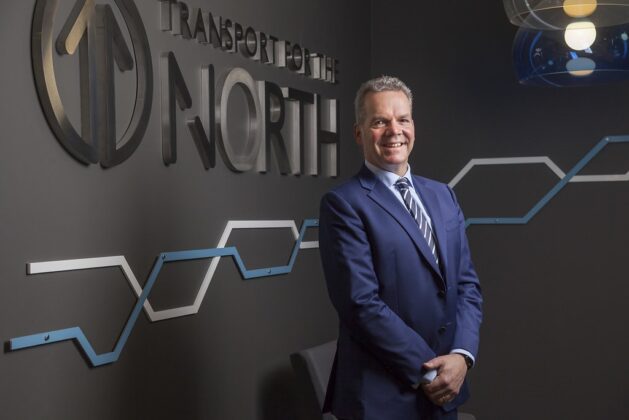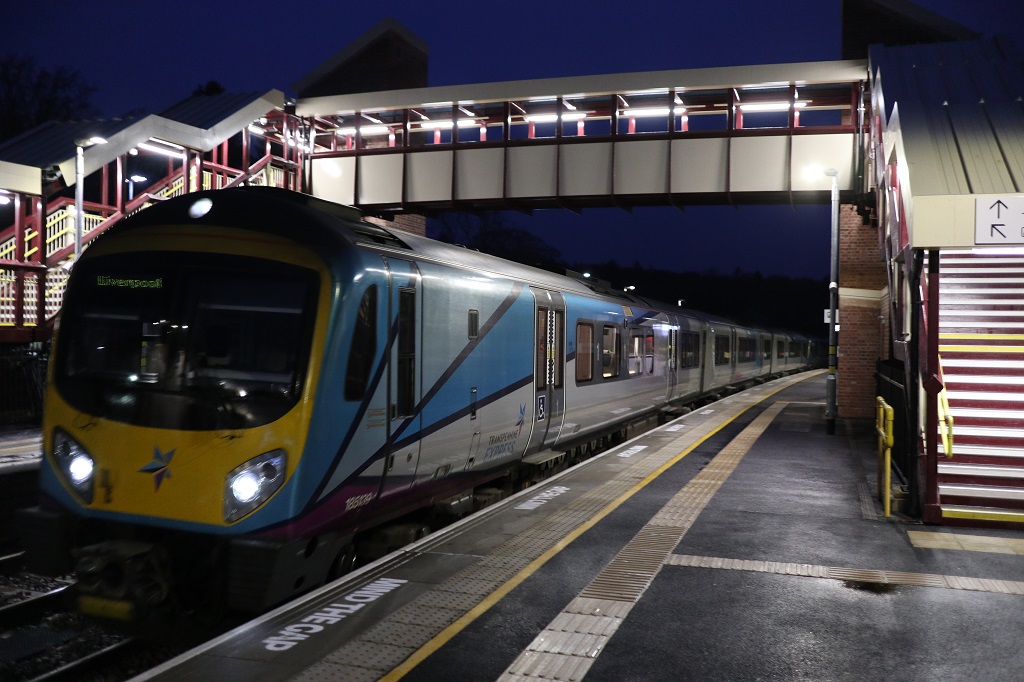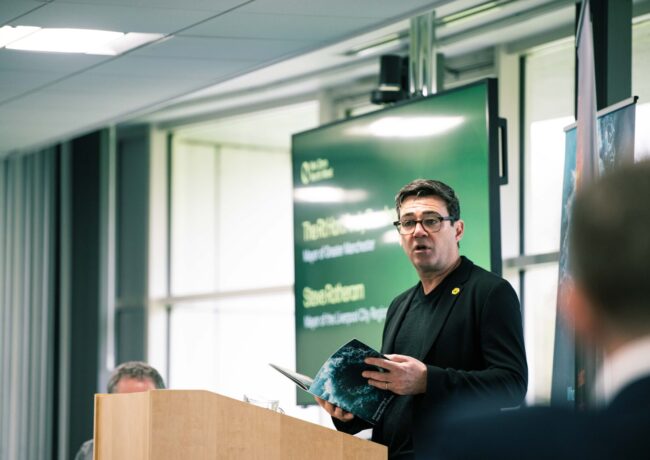TfN maps out full rail vision
The region’s transport body has detailed its preferred route for the £39bn Northern Powerhouse Rail project, including a line from Liverpool to Manchester via Warrington, and urged the Government to back the plans.
Construction of the line could begin in 2024 subject to Whitehall approval, according to Transport for the North.
The proposed Northern Powerhouse Rail network, aimed at boosting east-to-west connectivity in the north of England, would link up Liverpool, Hull, Sheffield and the North East.
It would also dovetail with High Speed 2, with shared track, stations and junctions in parts, to slash journey times between the cities of the North.
TfN’s detailed proposals include:
- Construction of a line from Liverpool to Manchester via the centre of Warrington
- Construction of a line from Manchester to Leeds via the centre of Bradford
- Significant upgrades and journey time improvements to the Hope Valley route between Manchester and Sheffield
- Connecting Sheffield to HS2 and on to Leeds
- Upgrades and electrification of the rail lines from Leeds and Sheffield to Hull
- Upgrades of the East Coast Mainline from Leeds to Newcastle, via York and Darlington, and restoration of the Leamside line
The proposals have been sent to transport secretary Grant Shapps and further discussions are expected in January before the transport body lodges a formal business case for the project next March.
Once the business case is submitted, Transport for the North’s chief executive Barry White will step down after more than three years in the role.
Tim Wood, Northern Powerhouse Rail director, said the network could “deliver thousands of jobs, cut carbon emissions and slash journey times between the North’s towns, cities and beyond”.
He added: “With the need to ‘build back better’ following the Covid-19 pandemic, delivery of projects like Northern Powerhouse Rail would be transformational for the North’s economy.”
The extent of the Government’s support for Northern Powerhouse Rail and its commitment to levelling up the North will become clearer once its Integrated Rail Plan is published.
The plan outlines how investment in northern rail projects, including Northern Powerhouse Rail, HS2 Phase 2b and the TransPennine Route Upgrade, will be delivered. It is due to be published this year.
Wood added: “The Integrated Rail Plan is a significant moment to secure a long-term, funded infrastructure pipeline for the North. Transport for the North has been consistent that this should include HS2 and Northern Powerhouse Rail in full and deliver the full ambition to transform the North.”
Wood and other regional transport experts spoke at Place North West‘s Transport + Infrastructure event on Tuesday, for which slides and a summary will be published on this website next week.






Why does Warrington end up with three existing and three rail new lines passing through Bank Quay plus a Bypass? This is in addition to the Warrington Central Line, not shown on the plan. A lot of extra capacity which isn’t needed. I would drop the bypass as it serves nobody.
By GD
I hope transport for the north isn’t forgetting cheshire! We’ve been waiting for the mid cheshire to be electrified for decades. Plus it is in tier one!
And also the Sandbach to Northwich line via Middlewich it needs reinstating now!
By northwich
Good luck trying to find a route through Warrington with the extensive house building in the past 35 – 40 years both East and West of the town, unless you use the current freight line from Ditton which becomes part of the Trans – Pennine way to the east of Warrington.
By Gordon Young
High speed to Liverpool via Warrington is paramount. The increase in the Northwest’s GVA will pay this back many times over.
By Red Squirrel
This is very interesting and has wide ranging effects if completed: NPR HS2 would allow express trains to completely vacate existing lines, allowing them to be used for suburban and regional trains, providing a much more efficient local network with higher frequencies on top of the long distance benefits. HS2 on its own can’t do that.
That said, a couple of really important things need to be included which are not described on this map. Possibly the most important is a through station at Piccadilly. This will provide a fast and effective journey for Leeds to Liverpool/Manchester Airport journeys and is vital. Any suggestion of (only) terminal platforms would just be cheap cost cutting that we are so used to in the north.
A well designed NPH should connect Liverpool fully to HS2, by using the line passing Warrington and joining HS2 below MCR Airport. This is great news for Liverpool who otherwise would have felt a bit left out. Liverpool residents would have the choice of HS2 trains to London or NPR trains to cross to MCR or Leeds.
What seems to be missing are northern links to/from Liverpool. Perhaps it’s just not marked on this map, but a spur from NPH should also connect up to HS2 going north for links to a future HS line extension to Scotland or at least upgraded existing links, bypassing local lines to ensure that Liverpool can also benefit from the same suburban and regional improvements.
Terminating the line at Leeds is interesting as many would argue this should continue to York and Newcastle. Leeds has a very poor public transport network, the worst in Europe for a large city with almost no effective suburban rail presence. One of its biggest problems is the two track bottleneck immediately east of the main station. There is limited capacity here, combining slow trains with fast trains allowing for no effective suburban infrastructure – and wouldn’t this get worse with added express trains? By not extending NPR, this problem would not be solved – unless of course a small section is simply not shown on this map that extends beyond the city centre to join the main line just outside the suburbs.
Sheffield seems to have pros and cons, the good part is a recommendation to include it fully into HS2, which really should never have been in question. Saving money is all very good, but if we are to do this job, let’s do it properly. On the negative side, only an “upgrade” is recommended for connecting to MCR. While upgrades are good, this could mean that slow and fast trains continue to share tracks which would make it very difficult for Sheffield to improve its suburban trains – would this upgrade allow fast NPH rail trains from Liverpool direct access to Sheffield? One way around this is if the upgrade is four tracking within all of Sheffield’s metropolitan area, but I don’t know how possible that would be.
Overall it is better than hoped from looking at the map and some of the notes mentioned. Whether the government agrees with this is a different thing. This is still the same government that moved the Northern Powerhouse HQ from the North to London. Yes, they actually moved the body responsible for improvements to the North to the South. There is also a huge amount of negativity against HS2, which from anyone who has lived in countries with high speed rail (Germany, Japan, France, Spain etc) will just shake their heads in amazement.
We need NPR and HS2. We can’t have one without the other. HS2 and NPR are not just about faster long distance journeys, but also about removing congestion on existing lines to allow them to better support local and regional services. We need to remove ALL express trains to their own tracks, so we need both and we need them to be built properly.
By EOD
Why no through rail station at Liverpool Airport? And they could connect Piccadilly station by tunnel with east and west lines astride Victoria station. A one-mile tunnel with used tunnel machines from London. No money? Tell the Bank of England to print some. Even the most economically ignorant must know now that money is not mined by gnomes, it grows on a magic BofE money tree. Theresa May said there is no money tree. What does she know? Grab a basic economics book from your local closed library. Print tens of billions if you want.
By James Yates
The Leeds-Wetherby-Harrogate-Ripon-Northallerton corridor contains 250,000 inhabitants (over a million if you count Leeds). Public transport in this corridor is appalling with only four buses daily between Ripon and Northallerton and those are only between the peaks.
Harrogate, the largest town in North Yorkshire, is only 24 miles from the County town of Northallerton yet 50 miles away by rail and a change of train at York. Currently the journey takes 100 minutes. It would be less than 30 minutes if the line through Ripon was reinstated.
There is no through bus between both towns. The current journey time is 100 minutes with a change at Ripon but it is impossible to stay for the evening as the last bus leaves Northallerton at 1730.
Leeds-Ripon is difficult post evening peak. The latest train from Leeds is 2128 that connects into the 2305 last bus from Harrogate to Ripon arriving Ripon 2338. This is over 2 hours to travel only 30 miles within the same City Region. At an average speed of 12mph, it is quicker by galloping horse. This is not good enough in 2020 when journey time was only 53 minutes by through train in 1920.
There is a through bus Leeds-Ripon taking as much as 90 minutes in the peak but the bus station is not as central in Leeds as the railway station and impossible for interchange between the two especially for elderly, disabled or with heavy luggage..
Approximately 3.5 million commuter journey’s are made along this corridor each year mainly to Leeds and Harrogate. Harrogate is gridlocked in the peaks with journey times inflated by an hour from Ripon and Wetherby on the A61 and A661 respectively. NYCC solution to this problem is more road building instead of reinstating rail in this corridor.
The disused trackbed of the (Leeds)Cross Gates-Wetherby line goes right through East Leeds new town of 10,000 houses yet plans are to obliterate this route instead of future-proofing it. Criminally short sighted yet £100m has been spent on a 4-mile road to connect to a proposed park & ride facility and the M1 at Thorpe Park.
TfN should recognise that not everyone wants or needs to travel to Manchester and Newcastle at 200mph. More local trains for commuters that have to use car daily is just as valuable to the environment as high speed lines. A feasibility study into restoring the railway through this corridor should be funded by TfN without delay as it would create another strategic route between West Yorkshire and Teesside/Durham/Tyneside and Scotland adding capacity and resilience reducing pressure off congested York.and the Leeds-Micklefield-York line currently operating at capacity.
By Riponian